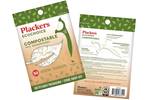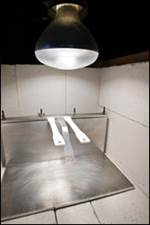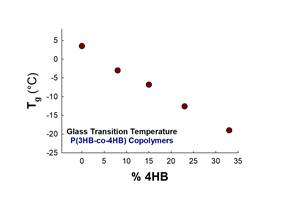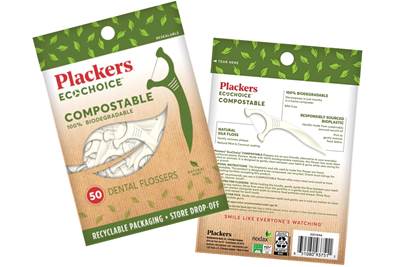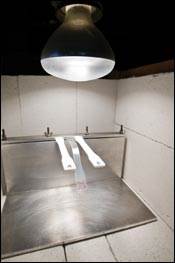Q&A: Bioproduction of PHA and the Future of Plastics
A conversation with Max Senechal and Leah Ford of CJ Biomaterials
In 2025 most polymers are still derived from fossil fuels, but geopolitical, environmental and geological risks to current feedstocks could change what polymers are made and how.
Biopolymers like polyhydroxyalkanoate (PHA) could be part of that transition. Max Senechal, chief commercial officer at , and Leah Ford, marketing director at CJ Biomaterials, spoke with Plastics Technology to provide some background and discuss the current state of PHA.
Q. Where are we now with the adoption of PHA, how did we get here, and what should we look to see in the near future?
Max Senechal: PHAs have been in the conversation for quite some time. The early work on scaling up and industrializing PHA production started in the early 2000s, first with refining the microbiology component of the technology and then scaling up to large fermentation plants. In the past 10 years, the focus has been on commercialization and establishing a connection between the PHA world — or the biology world — and the plastics world, which for the past 70 years was connected to petrochemistry. It’s really been about taking this resin that we’ve known how to produce at scale for quite some time and making it readily usable for converters and, ultimately, brands for a variety of applications.

Max Senechal is chief commercial officer at CJ Biomaterials. Source (all images): CJ Biomaterials
To be more specific, some of the applications that have really taken off now are in the foodservice ware industry. I’m sure you’ve heard about straws, cutlery, paper cup coatings, cup lids. Pretty much anything that goes on a tray has been an early target for application development, alongside flexible packaging for food. Those have been targeted because a lot of the brands have set very aggressive sustainability goals. I think the consumer pressure has been pretty high on some of the large brands to improve their footprint, and the PHAs, in combinations with other biopolymers, are now able to provide good performance and a better end-of-life profile.
Q. Translating that to a historically petrochemical-based industry, are there analogs that you would compare PHA to, to give people a sense of what this material is like? What incumbent materials would it replace?
MS: PHAs are a very good replacement for polypropylene (PP), for example. If you make a film of PHA, extrude a sheet for thermoforming or even make a compound for injection molding, the touch, feel and performance can be close to PP. It’s not the only analog, but quite a few applications we’re aiming to replace today are based on PP.
A point that I don’t want to get lost as we talk about PHA, is that where a lot of the improvements and innovations have occurred — in the past five to seven years, in particular — are in the knowledge and ability to combine PHAs with other biopolymers, whether it be PLA [polylactic acid], PBAT [polybutylene adipate terephthalate], PBS [polybutylene succinate], because there’s no one biomaterial that is the sliver bullet on its own. There’s always the need to modify for a specific performance, either a little more impact resistance, or more rigidity, better flow, better rheology. And we’ve learned a lot about how to combine various biomaterials to reach the optimal set of properties while aiming for the end-of-life objectives that brands and end users have in mind: industrial compostability, home compostability or soil/marine. There’s been a lot of learning along those lines in the past five years.
Q. It sounds like there are a variety of targets to hit in terms of application functionality, added to different requirements in terms of end-of-life. Is that done in compounding or how do you meet those? What are some of the tools at your disposal?
MS: There are at least two or three dials that we have in our supply chain. Probably the most dramatic is how we design the strain to make the PHA. The microbial engineering is very important because it imparts on the final PHA a variety of characteristics, whether it be molecular weight or any specific chemical structure. The second dial is how we blend it, compounding with other materials to target properties like impact resistance, for example, or how it will be processed, how it will perform in the equipment. Third is the conditions used in the machine, whether it be a straw machine or a film line or an injection molding machine. So these three dials are what you have at your disposal to get specific properties, and we can use all three of them. The past few years have been about learning to use these three in combination to get the desired results.
What would an injection molder or an extrusion professional need to know about PHA and some of these biomaterials coming into their process. What’s different about it than processing PP or PE?
MS: One of the key challenges for the biomaterials in general has been to find these ideal processing conditions for existing equipment. Because one of the promises that we have always made is that we aren’t going to force the industry to change its equipment. We will adapt, we will find the ideal processing conditions to make that work. It’s going to be temperature control, there’s going to be changes in how you set up your extruder. There will be basic processing conditions that we supply with our material, but we also do a lot of work going back to our manufacturing, modifying the basic properties to be better suited to the machines used for conversion. That means the molecular weight we produce, the melt index our material has, it needs to be adapted depending on the type of machines that people use. There’s a lot of know-how that comes with that, right?
“One of the promises that we have always made is that we aren’t going to force the industry to change its equipment.”
Today’s biomaterial world is no longer just about engineering strains and scaling up fermentation — it’s also making that connection with how the products are being used by the converters. The temperature profiles they have, how they use their machines, all of that learning has been injected back into how we make our material.
Q. If I understand correctly, PHA is made naturally by microbes, right? What is that like and what do you feed them?
MS: What they need is a source of carbon. PHA is a naturally occurring polyester, and a lot of different bacteria in nature will make PHA the same way. The analogy we use is the way that humans make fat as energy storage when they ingest food. Cells will make PHA as energy storage for future use. They typically stock around 5-7% of their body weight, and if they run out of energy they will start consuming the PHA. So what we do with the engineering is ensure that the microbes can make this a much larger part of their mass. Instead of 7%, it will be the majority of their mass. The reason PHAs are readily biodegradable when they end up in nature is that microbes recognize them as a readily available source of energy.
Their metabolism needs a source of carbon to be able to make PHA. We at CJ currently use cane sugar. Others use canola oil or dextrose from corn. You can use methane gas, but then you need to use different organisms that are adapted to use that source of energy and convert it into PHA inside their cells.
Q. What has the uptake been like so far in terms of converters adopting PHA?
MS: The fastest-growing opportunities today are in the food industry. And more specifically, replacing single-use plastics. I think everything that’s quick consumption, use that lasts 5 or 10 minutes but then will be in the environment for thousands of years — that’s a primary target right now.
We’re at a point now where we can provide solutions for straws that are home compostable. We can even provide material that is marine-degradable. There are some subtleties around how you get the articles certified, but we can now offer end-of-life solutions that are quite attractive for these types of applications. This is where we have seen good momentum.

PHA is used in compostable cutlery.
Q. Is there any overlap between how long people might want their packaging to last and when it starts breaking down?
MS: In terms of shelf life, the mechanism of degradation is microbial activity. So you need a biologically active environment for the material to go into. I have a PHA cup here that I’ve been using for 8 months and it’s fine, so it’s very shelf stable. But if I take it and bury it in my backyard, the microbes in the soil will start attacking the PHA as a source of energy.
“If you have a wooden table, that can last centuries. If you take that table and bury it in the ground or put it in water, it will start to decay.”
Maybe a good analogy would be wood. If you have a wooden table, that can last centuries. If you take that table and bury it in the ground or put it in water, it will start to decay. It’s the same idea.
Q. What would be the next big step forward toward seeing more PHA on the shelves?
MS: The simplest way to answer would be that we need to scale. When we talk about single-use plastic straws, cups and cutlery — that’s huge, that’s a big opportunity right there. But in the grand scheme of things, we’re still ramping up, and it’s not broadly adopted. There’s a need to increase our scale and lower our cost structure to make it easier for people to adopt these technologies. But also what will be needed is good, sensible regulation that will level the playing field — not necessarily to make incumbent products more expensive and ours subsidized, but rather to put infrastructure in place that will enable people to fully utilize the unique characteristics of our products. By that I mean: easily accessible composting sites, ease of segregation and collection, ease of identification of compostable products. Brands can set objectives — they can invest in technology and try to make their products more sustainable — but for the promise to be fulfilled, you need the infrastructure in place.
Q. We have a system for collecting landfill waste and recycling collection programs, but are there compost collection programs?
Leah Ford: Some states are doing a really good job. Minnesota, where I live, has a lot more residential access to composting, per capita, than any other state. Hennepin County [Minneapolis metro area] has a three-bin system where our organics are collected alongside our recycling and our trash. The city of Minneapolis specifically has done an amazing job rolling this out to multifamily homes, where previously single-family homes were prioritized. As part of that, they’ve been able to drive down contamination rates and make sure they are getting clean streams for recycling and organics.

Leah Ford is director of marketing at CJ Biomaterials.
The composters here accept compostable packaging. There are two major composters serving the Twin Cities area, and one is about to open a large new facility because of how successful organics collection has been. And so, per Max’s point about regulation, a good place that shows up is just increasing the number of available composting sites. Compost sites used to have to be permitted under landfill regulations, though compost sites are very different from landfills, and it was very expensive to get a landfill permit. So the state had to change some of its regulatory boundaries to make it easier for compost sites to be permitted, so that we could add capacity to accept food scraps and compostable packaging. That’s an example of the important work that needs to be done to help create the infrastructure.
Composting infrastructure in the U.S. grew 49% between 2021 and 2023. So access is growing by leaps and bounds. Laws in states like Minnesota, Maryland, Colorado, Washington — all of these states with extended producer responsibility — this legislation is designed to help grow composting infrastructure, and they already have some good composters in place so these systems can grow comprehensively.
Q. Can you elaborate on some of the differences between a composting site and a landfill?
MS: A problem with some landfills is if not well managed, they can emit methane, which is a much more potent greenhouse gas than CO2. With composting, CO2 will be emitted, which is better, but the CO2 is then recaptured by the feedstock that we’re using. So that closes that loop. And you make some very good nutrients for the soil that support agriculture. There’s also anaerobic digestion that could be an end-of-life option for these materials.
LF: I think an important distinction is that a landfill is an end of the road. If you are a landfill operator, you’re collecting waste, burying it, trying to do so safely. Composters do not see themselves as waste processors but as manufacturers of a value-added product.
To date, most of the composting in the U.S. has been focused on yard waste. Yard waste collection goes to composters, and they create compost that they sell to gardeners, to farms — there’s a whole industry built on the purchase and sale of compost. So as we look at compostable packaging and food scraps and the permitting to expand the number of compost sites, part of that process has to move beyond just being able to accept yard waste.
The value proposition for participating in composting is very different from a landfill, in that they are trying to create a product. And we’ve taken a lesson from what has happened with recycling, and making sure that there are good downstream markets for composters to sell into.

Bakery chain Tous les Jours is using straws made from PHACT PHA biopolymer from CJ Biomaterials.
Related Content
NPE2024 Wrap-Up: Sustainability Dominates Show Floor News
Across all process types, sustainability was a big theme at NPE2024. But there was plenty to see in automation and artificial intelligence as well.
Read MorePlastics Technology Year in Review: Your Favorite Reads of 2024
A year-end review of the top stories showcasing industry trends, advancements and expert insights. Revisit the articles that captured the attention of the plastics community.
Read MoreBreaking News From NPE2024
Here is a firsthand report of news in injection molding, extrusion, blow molding and recycling not previously covered.
Read MoreFilm Extrusion: Boost Mechanical Properties and Rate of Composting by Blending Amorphous PHA into PLA
A unique amorphous PHA has been shown to enhance the mechanical performance and accelerate the biodegradation of other compostable polymers PLA in blown film.
Read MoreRead Next
Making a Play With PHA
Processors with sustainability goals or mandates have a number of ways to reach their goals. Biopolymers are among them.
Read MoreHow to Optimize Injection Molding of PHA and PHA/PLA Blends
Here are processing guidelines aimed at both getting the PHA resin into the process without degrading it, and reducing residence time at melt temperatures.
Read MoreEnhancing Biopolymers: Additives Are Needed for Toughness, Heat Resistance & Processability
Plastics are going “green,” but they will need some help to get there. Biodegradable polymers derived from renewable resources are attracting lots of interest and publicity, but that enthusiasm is counterbalanced by persistent questions of availability, cost, performance, and processability. All these issues are inter-related: Increasing demand will lead to more capacity, which will presumably lead to lower prices. But the foundation is market demand, which ultimately depends on whether biopolymers will have the performance properties and processability to compete with existing non-renewable plastics.
Read More

